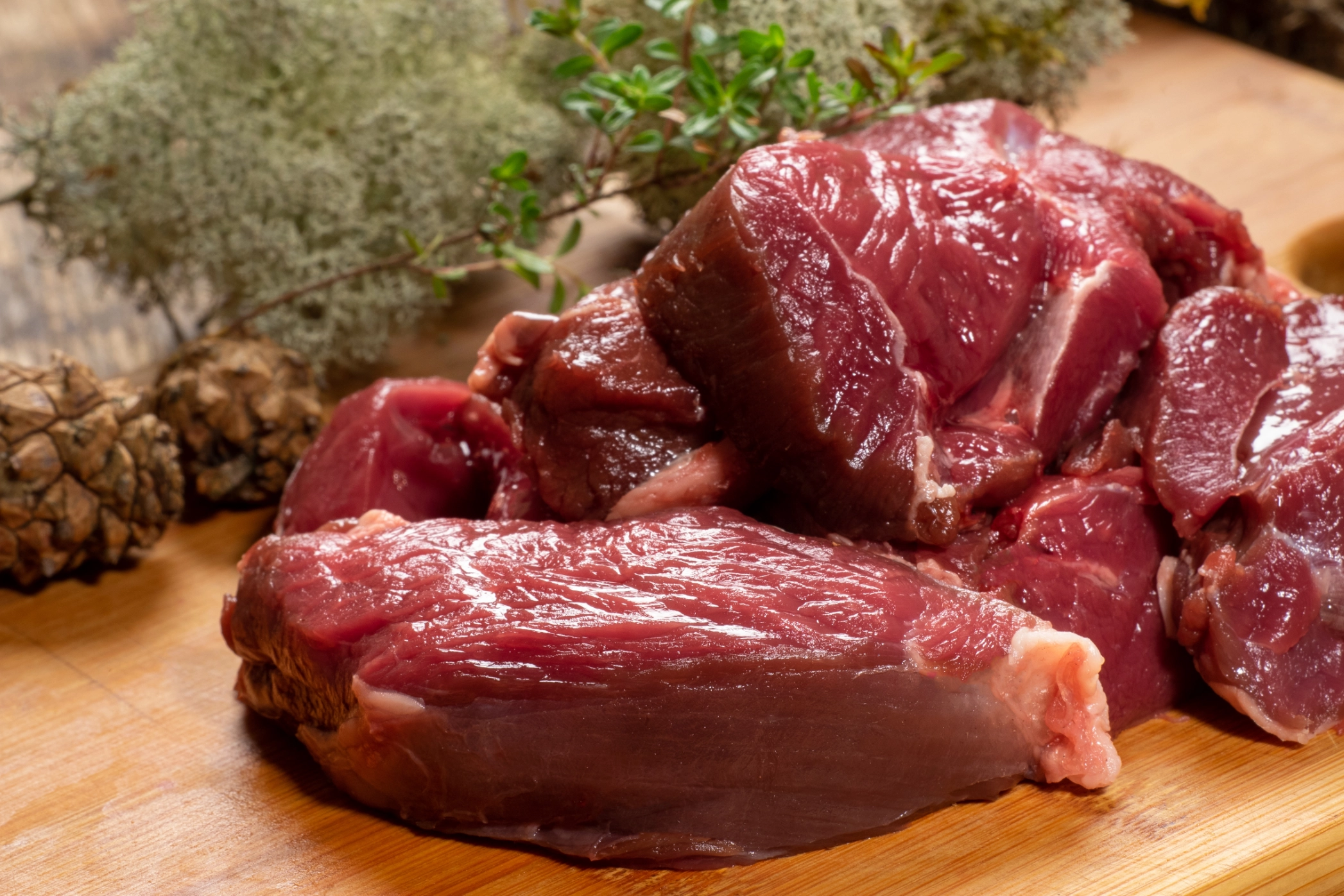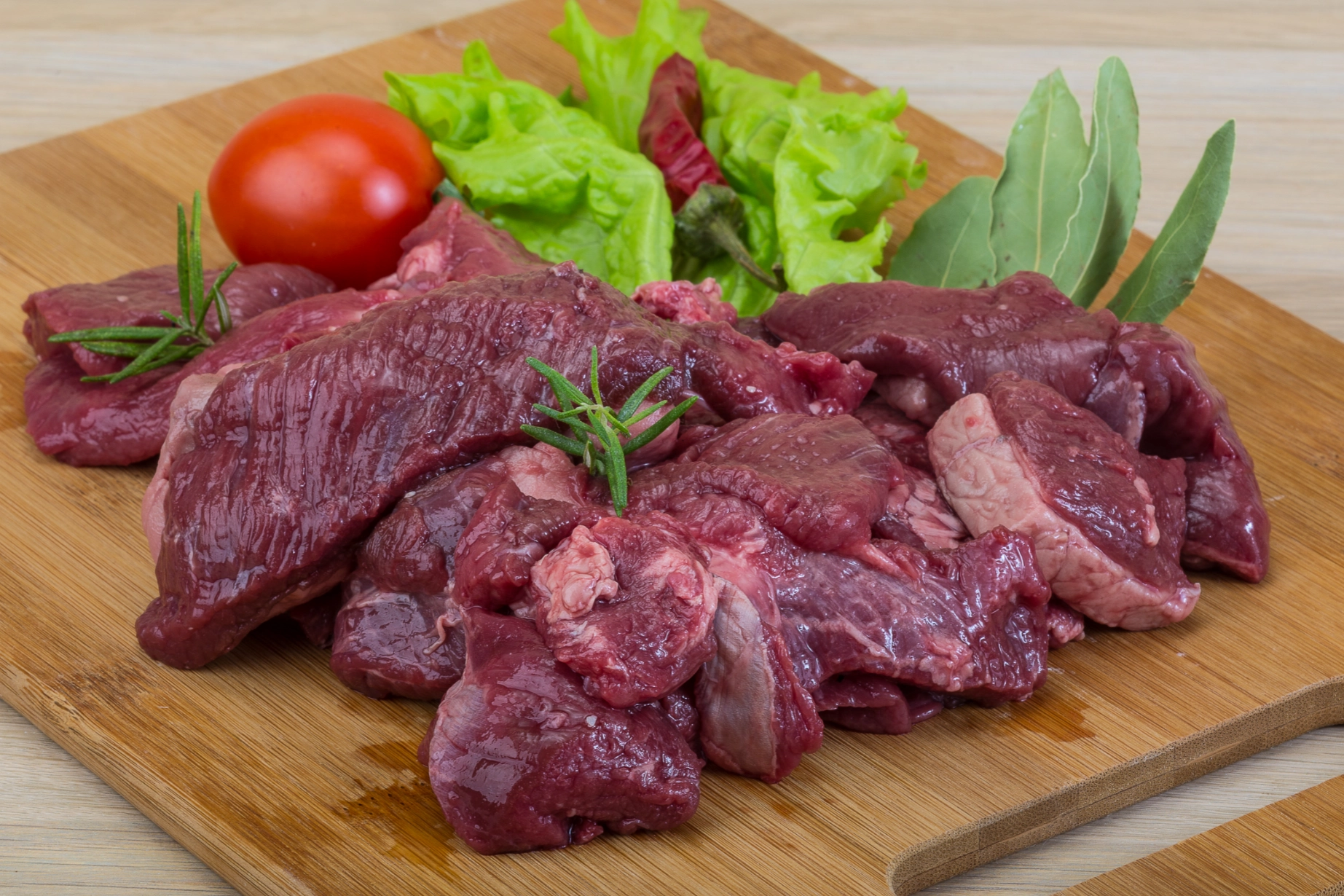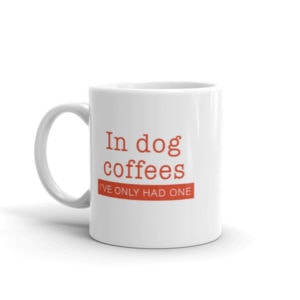This post may contain ads and affiliate links and we may earn a small commission when you click on the links at no additional cost to you. As an Amazon Affiliate, we earn from qualifying purchases. You can read our full disclaimer here.
Ground Venison for Dogs: Is It the Right Choice for Your Canine?

Ground venison for dogs became a hot topic in our home when a hunting friend dropped off a generous case of the meat.
Initially meant for human consumption, the sheer volume had me wondering: could our Golden Retriever and Goldendoodle enjoy this too? The intriguing aroma wafting through the kitchen certainly caught their attention.
Venison, known to many as a delicacy in deer meat form, is a favorite in many gourmet dishes. However, translating this from our plates to our pets’ bowls is a journey filled with questions.
In an era where pet nutrition is of utmost importance, introducing novel foods like venison into their diet requires thorough research. After all, our furry pals are more than just pets – they’re family.
Pros and Cons of Ground Venison for Dogs
As we would weigh the pros and cons of a new food for ourselves, it’s equally crucial to understand the implications of ground venison for our four-legged friends.
Curious about other foods safe for dogs? Read our post about dogs eating yellow rice.
Ground Venison for Dogs: Can They Really Eat It?

Absolutely, dogs can enjoy ground venison as part of a balanced diet. Many dog owners have found it to be a nutritious and palatable option for their furry companions. But let’s dig deeper.
What Exactly Is Venison?
Venison is deer meat. Simple as that. It’s been a source of sustenance for humans for ages. Whether it’s grilled, stewed, or ground, venison is versatile.
It boasts a unique flavor profile, often described as gamey, rich, and lean. Its lean nature makes it lower in fat than some other meats.
The Canine Palate: Do Dogs Enjoy Venison?
Here’s the burning question: Is venison fit for our fur babies? Let’s break it down.
- Nutritionally Rich: Venison offers a punch of protein. It’s also packed with vital nutrients like B vitamins, zinc, and iron. That’s a win!
- Low Allergenic Potential: Many dog owners have reported that venison, being a novel protein source, works wonders for dogs with sensitivities or allergies to common meats like chicken or beef.
- Digestibility: It’s often easily digestible for most dogs. This means a happy tummy for your pup.
But as with all good things, moderation is key. Just because it’s a hit among many dogs doesn’t mean you should swap out their entire diet for venison. Like introducing any new food, a gradual approach is best.
What’s the General Buzz Amongst Pet Parents?
Among the dog owner community, venison is generally well-received. It’s seen as a premium, high-quality meat. Many top-tier dog food brands even have venison-based products.
Yet, it’s essential always to ensure that any ground venison for dogs is sourced responsibly and prepared safely.
There you have it. Ground venison seems to be more than just a gourmet treat for humans; it’s a potential star in our dogs’ bowls too.
Ground Venison for Dogs: A Nutritional Powerhouse?
Nutritional Profile: More Than Just Protein
Venison isn’t just a tasty treat; it’s chock-full of nutritional benefits for dogs. Here’s the rundown:
- Proteins: High in protein, venison is a powerhouse for muscle development and overall health.
- Vitamins: Rich in B vitamins like B6 and B12, venison supports energy production and DNA synthesis.
- Minerals: Loaded with zinc and iron, this meat helps with immune function and facilitates oxygen transport in the bloodstream.
- Omega Fatty Acids: While it might not rival fish, venison offers a decent dose of omega-3 and omega-6 for that shiny coat and healthy skin.
Every meat boasts its own set of perks, but venison seems to sit comfortably at the top with its impressive profile.
Lean Meat: A Healthier Choice?
When we talk lean, venison stands tall. Comparing its fat content to other meats, venison:
- Is leaner than beef or pork.
- Offers fewer calories because of its reduced fat content.
If you’re aiming for a leaner dietary option for your pup, or if they’re just trying to stay in shape, venison is a top contender.
Hypoallergenic Qualities: A Sensitive Stomach’s Best Friend?
Some of our furry friends have finicky digestive systems. For those sensitive to common meats like chicken or beef, venison can be a breath of fresh air. Here’s why:
- It’s a novel protein source, meaning fewer chances of triggering allergies.
- It can alleviate digestive woes and reduce skin irritations for many dogs.
For the sensitive souls out there, venison might be the novel dietary answer they’ve been waiting for.
Taste and Palatability: Why Dogs Might Do the Happy Dance
No matter how nutritious, if it doesn’t taste good, it won’t get the paw of approval. But with venison, taste is where it shines:
- Many dogs find venison more appealing due to its gamey flavor.
- It offers a welcome change from their regular meals, making meal times exciting.
The wagging tails and eager eyes at the sight of ground venison in their bowls speak volumes about its taste appeal.
Ground venison for dogs offers a blend of nutritional value, leanness, hypoallergenic properties, and undeniable taste. It’s not just about variety; it’s about catering to the health and happiness of our canine companions.
Potential Risks or Drawbacks of Ground Venison for Dogs
While ground venison brings a bundle of benefits to the doggy dinner table, it’s essential to consider the other side of the coin. Let’s delve into some potential pitfalls associated with this meat.
Cost and Availability: The Premium Price Tag
Venison, for many, is seen as a gourmet option, and with gourmet often comes a higher price. The reasons for its premium status include:
- Limited Supply: Unlike beef or chicken, which are mass-produced in vast quantities, venison typically comes from deer populations that are hunted or farmed in smaller numbers.
- Specialized Processing: Venison requires specific processing to ensure it’s safe and palatable. This special treatment can hike up its cost.
- Seasonal Variations: Depending on where you are, venison might be a seasonal meat, making it less available during certain times of the year.
All of these factors contribute to venison often being pricier than other meat options. And while some specialty pet food stores might stock it, finding a regular supply could be challenging, depending on your location.
Potential Parasites and Diseases: Safety First
While venison is a delicious meat option, there’s no denying that it comes with potential risks, especially if not sourced or prepared correctly:
- Wild-Caught Concerns: If the venison is sourced from wild deer, there’s a potential for parasites or diseases. Wild animals can be carriers of ailments not commonly found in domesticated or farmed animals.
- Preparation Precautions: Ground venison for dogs should always be sourced from reputable suppliers. It’s crucial to ensure it has been adequately treated to eliminate potential risks. Raw feeding enthusiasts need to be particularly cautious and might want to consider freezing the meat first to kill any parasites.
Digestibility: Not Every Tummy’s Cup of Tea
Just as some dogs might find venison to be the culinary highlight of their week, others might not take to it as easily. Especially if they’re trying it for the first time:
- Tummy Troubles: As with any new food, introducing venison should be done gradually to avoid digestive issues. Sudden changes can lead to upset stomachs, diarrhea, or even vomiting in sensitive dogs.
- Unique Protein: Venison is a novel protein source. While this is excellent for dogs allergic to common meats, those unfamiliar with it might need a slow introduction to ensure they can digest it without problems.
While ground venison offers numerous perks for our canine companions, it’s essential to tread with caution. Ensuring you source quality meat, introduce it slowly, and weigh its cost and availability against other options will help you make the best decision for your furry friend.
How to Safely Introduce Ground Venison to a Dog’s Diet
When it comes to our furry friends, any dietary change should be approached with care. Introducing ground venison is no exception. It’s not as simple as swapping out their regular chow for this novel protein.
Here’s a guide to ensuring your dog gets to enjoy venison without any hiccups.
Starting Slow: Ease Into It
Dogs, like us, can have sensitive stomachs. A sudden switch might throw their digestive system into chaos. So, here’s what you can do:
- Mix and Match: Start by adding a small portion of venison to their regular food. This can be about 10% venison to 90% of their usual meal.
- Incremental Increases: Over a week or two, gradually increase the venison percentage while decreasing their regular food. This slow transition allows your dog’s system to adjust smoothly.
Watching for Allergies or Digestive Issues: Know the Signs
Every dog is an individual. While many dogs can enjoy venison without issue, some might have reactions. Be vigilant and watch out for:
- Digestive Disturbances: Loose stools, diarrhea, or vomiting can indicate the food isn’t sitting well.
- Skin Irritations: Itchy skin, redness, or unusual hot spots can signal an allergic reaction.
- Behavioral Changes: If your dog becomes lethargic or overly aggressive, it might be related to the food change. However, always consult with a vet if in doubt.
Frequency and Quantity: Getting the Portions Right
Venison is nutritious, but how much is too much? Here’s a general guideline:
- As a Treat: If you’re offering ground venison as a treat, a small portion once or twice a week should suffice.
- Main Diet: If you’re making venison a regular part of their diet, aim for it to constitute no more than 20-25% of their total food intake. This ensures they get a varied diet, benefiting from other protein sources as well.
- Size Matters: Remember, a Chihuahua’s venison portion will be vastly different from a Great Dane’s. Adjust portions based on your dog’s size, age, and activity level.
Even though the allure of ground venison for dogs is undeniable, it’s all about balance. Introduce it with patience, observe your dog’s reactions, and ensure they get a diverse, well-rounded diet.
Also, be sure to run any dietary changes by your veterinarian!
Raw vs. Cooked Venison: Which is Better for Dogs?

The debate between feeding raw versus cooked meat to dogs has long been a topic of discussion among pet owners and veterinarians. Ground venison for dogs isn’t exempt from this debate.
Let’s dissect the pros and cons of each method to help you make an informed decision.
Pros of Raw Feeding: As Nature Intended?
Many proponents of raw feeding argue that it’s the most natural form of feeding, closely mirroring what dogs might eat in the wild.
- Natural Enzymes: Raw venison retains its natural enzymes, which can aid in digestion and overall health.
- More Nutrients: Cooking can sometimes degrade certain nutrients. Raw meat ensures the preservation of these vital elements, giving dogs a nutrient-rich meal.
Cons of Raw Feeding: Not Without Risks
However, going the raw route isn’t all roses. There are genuine concerns to keep in mind:
- Bacterial Contamination: Raw meats can harbor harmful bacteria like Salmonella or E. coli, which can lead to gastrointestinal issues or other infections.
- Parasites: Especially if the venison is wild-caught, there’s a risk of parasites. Freezing can mitigate this, but it’s a concern nonetheless.
Benefits of Cooking: Safety Above All
For those hesitant about raw feeding, cooking the venison is a popular choice, and for good reasons:
- Kills Potential Pathogens: Cooking at the right temperature can kill off harmful bacteria and parasites, ensuring your dog’s meal is safe.
- Easier Digestion: Some dogs, especially those with sensitive stomachs or those not accustomed to raw food, might find cooked meat easier to digest.
Drawbacks of Cooking: Nutritional Compromises
But, as with raw feeding, there are downsides to consider:
- Loss of Certain Nutrients: Cooking can lead to the degradation of some vitamins and enzymes. For instance, B vitamins can be lost to some extent during the cooking process.
- Overcooking Issues: If not careful, it’s easy to overcook the venison, making it tough and less palatable for dogs.
To sum it up, whether to feed ground venison to dogs raw or cooked boils down to individual choice, factoring in your comfort level, your dog’s health, and your capacity to source and prepare the meat safely.
Whatever your choice, ensuring it’s done with your dog’s well-being in mind is paramount.
Wrapping Up Ground Venison for Dogs
Ground venison for dogs offers a plethora of benefits, from its rich nutritional profile to its hypoallergenic qualities. However, as with all food choices, there are considerations to weigh, such as sourcing, preparation, and potential risks.
Every dog is unique, and what works for one might not work for another. As responsible dog owners, our priority should always be the well-being of our furry friends.
So, whether you choose to introduce venison into their diet or not, always make informed choices, consult with a vet when in doubt, and keep your pet’s health at the forefront.
-

Coffee Mug – In Dog Coffees I’ve Only Had One
$11.95 – $14.95 Select options This product has multiple variants. The options may be chosen on the product page
